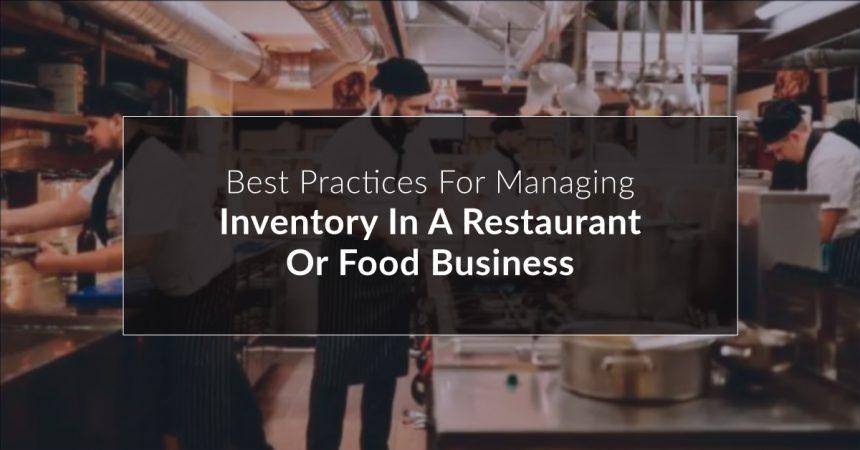Managing inventory can be a daunting task, especially in the fast-paced world of restaurants and food businesses. However, effective inventory management is crucial for success, as it helps reduce waste, control costs, and ensure that you always have the right amount of stock on hand. In this article, we’ll explore some of the best practices for managing inventory in a restaurant or food business, so you can run a more efficient and profitable operation.
- Keep track of inventory levels regularly: The first step in effective inventory management is to keep track of your inventory levels on a regular basis. This helps you avoid running out of stock, over-ordering, or letting inventory go to waste. Consider using an inventory management software or tool to track inventory levels, which can provide real-time updates and alerts when inventory levels are running low.
- Use a consistent and accurate recipe costing method: Recipe costing is the process of calculating the cost of the ingredients needed to make a specific dish. By accurately costing out your recipes, you can determine how much inventory you need to order and how much to charge for each dish. Use a consistent recipe costing method to ensure that your costs are accurate and up-to-date.
- Conduct regular physical inventory counts: Conducting regular physical inventory counts is essential for ensuring that your inventory levels are accurate. By physically counting your inventory on a regular basis, you can catch any discrepancies between the physical inventory and what’s recorded in your inventory management system. Conducting these counts can also help you identify slow-moving or obsolete inventory items, which can be sold at a discount or removed from the menu altogether.
- Use a first-in, first-out (FIFO) method: The FIFO method is a best practice for managing inventory in the food industry, as it ensures that the oldest inventory is used first. This helps reduce waste, as it prevents ingredients from expiring or going stale. Make sure to label each item with a date to ensure that they’re used in the correct order.
- Consider your storage and shelving system: Proper storage and shelving systems can help you organize your inventory and make it easier to find the items you need. Use shelving units with adjustable shelves to accommodate different-sized items, and label each shelf with the item name and quantity. Make sure to store perishable items like meat, dairy, and produce in a separate refrigerated unit to ensure that they remain fresh.
- Train your staff on inventory management procedures: Train your staff on inventory management procedures to ensure that everyone is on the same page. This includes teaching them how to use the inventory management system, how to conduct physical inventory counts, and how to follow the FIFO method. You may also consider incentivizing your staff to keep inventory waste to a minimum, which can help keep everyone accountable.
- Regularly review and update your inventory management system: Your inventory management system should be regularly reviewed and updated to ensure that it’s accurate and effective. Consider reviewing inventory levels and recipe costing on a weekly or monthly basis, and adjust your inventory levels accordingly. Make sure to also track any changes to your menu or business operations, as this can impact your inventory needs.
In conclusion, effective inventory management is essential for success in the restaurant and food business. By following these best practices, you can reduce waste, control costs, and ensure that you always have the right amount of stock on hand. Remember to keep track of inventory levels regularly, use an accurate recipe costing method, conduct regular physical inventory counts, use the FIFO method, consider your storage and shelving system, train your staff on inventory management procedures, and regularly review and update your inventory management system. With these practices in place, you’ll be well on your way to running a more efficient food business.



Leave a Reply